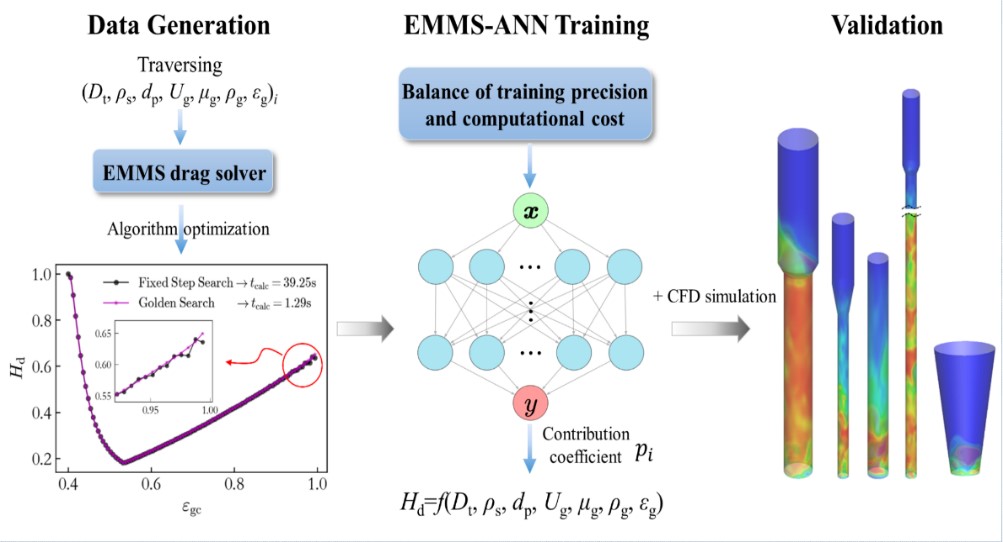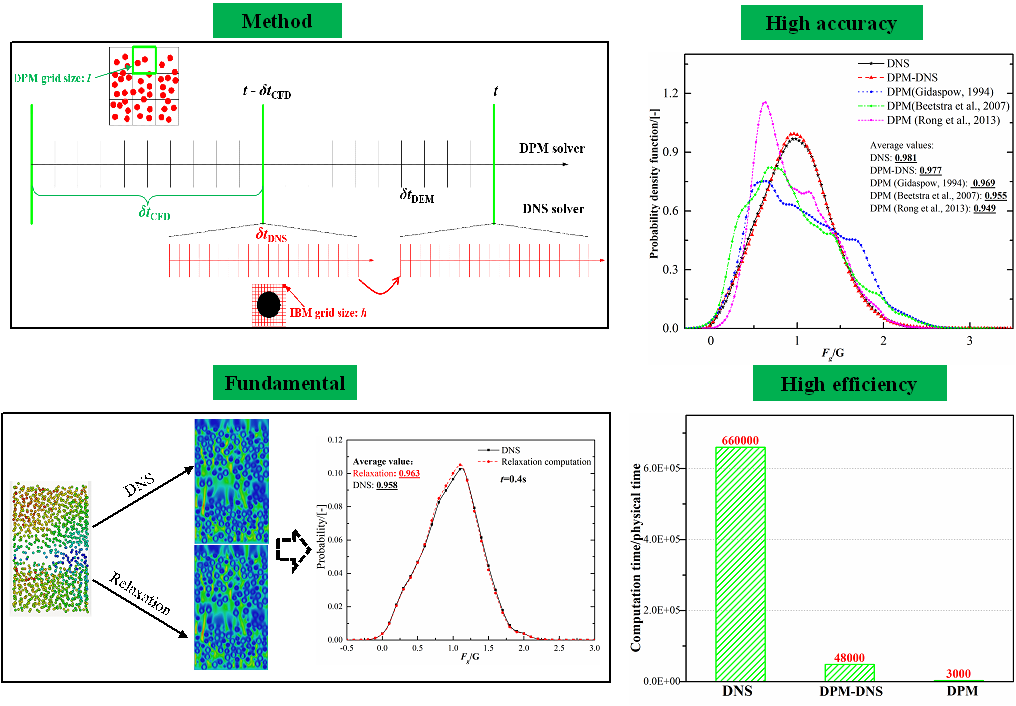In 2021, the division conducted more than 60 projects from NSFC, CAS and industries, published 61 papers, and organized the 4th Meeting of International Panel of Mesoscience (online). The two research platforms for mesoscience and virtual process engineering in Huairou Science City has finished construction.
Breakthough I:A multi-dimentional drag model based on machine learning and the EMMS-ANN software. Traditional sub-grid or EMMS (energy-minimization multiscale) drag models are suitable for fixed operating conditions and material properties. This study developed a multi-dimensional drag model for wide and variable operating conditions and material properties by coupling the artificial neural network (ANN). To this end, the solution algorithm of the original model is first optimized such that a large amount of training data is obtained, and reasonable ANN network structure parameters are determined by balancing the ANN accuracy and simulation efficiency. The EMMS-ANN model is successfully applied to fluidized bed reactors with complex geometries and reactions. The EMMS-ANN integrated software is then developed for model training, parameter analysis and generation of user-friendly drag files.

Fig. 1 The development process of the EMMS-ANN model
Breakthrough II:An efficient and accurate multi-scale simulation approach is developed for complex particle-fluid system. Discrete particle method (DPM) and direct numerical simulation (DNS) have been widely used to simulate gas-solid flow. DPM is computationally efficient but its accuracy is significantly dependent on the selection of interphase interaction models, whereas DNS is accurate but computationally expensive. In this work, we proposed a multi-scale method, DPM-DNS, where DNS of a relaxation process with modest computational cost was dynamically coupled to the DPM framework to evaluate the interphase force more accurately. The simulation results demonstrated that the resultant interphase force distribution and concentration profiles calculated by DPM-DNS are almost identical to pure DNS, but the computational speed is more than 10 times higher than DNS.

Fig. 2 Dynamic multi-scale simulation method of DPM-DNS
Breakthough III: Developing a mathematical approach to transform multi-objective dominant mechanisms into single-objective stability condition. Under the framework of mesoscience, in order to establish a mesoscale model, we need to build the stability condition of mesoscale structures. Accordingly, it is necessary to transform the multi-objective optimization problem (MOP) (expressing the multiple dominant mechanisms) into a single-objective one (SOP). Previously, based on the understanding that the dominant mechanisms are equally important to the system, we proposed a mathematical approach to transforming a MOP to a SOP, which was validated well in the gas-solid fluidization system (Chemical Engineering Science 192: 499-506, 2018) (Fig. 3). Recently, for turbulent pipe flow, we observed that the results calculated with this approach agree well with those from direct numerical simulations and experiments, validating this approach as well. Additionally, this approach has been applied successfully to heterogeneous catalysis, viscoplastic deformation of metals (Materials 14: 4667, 2021), and optimization of technology-chain structures (Engineering 7:1678-1679, 2021). Relevant results and statements will also be published soon (Annual Review of Chemical and Biomolecular Engineering, in press).

Fig. 3 Comparison between the results calculated with the above mathematical approach and those via the original stability condition for gas-solid fluidization system
 Search
Search



 京公网安备110402500047号
京公网安备110402500047号